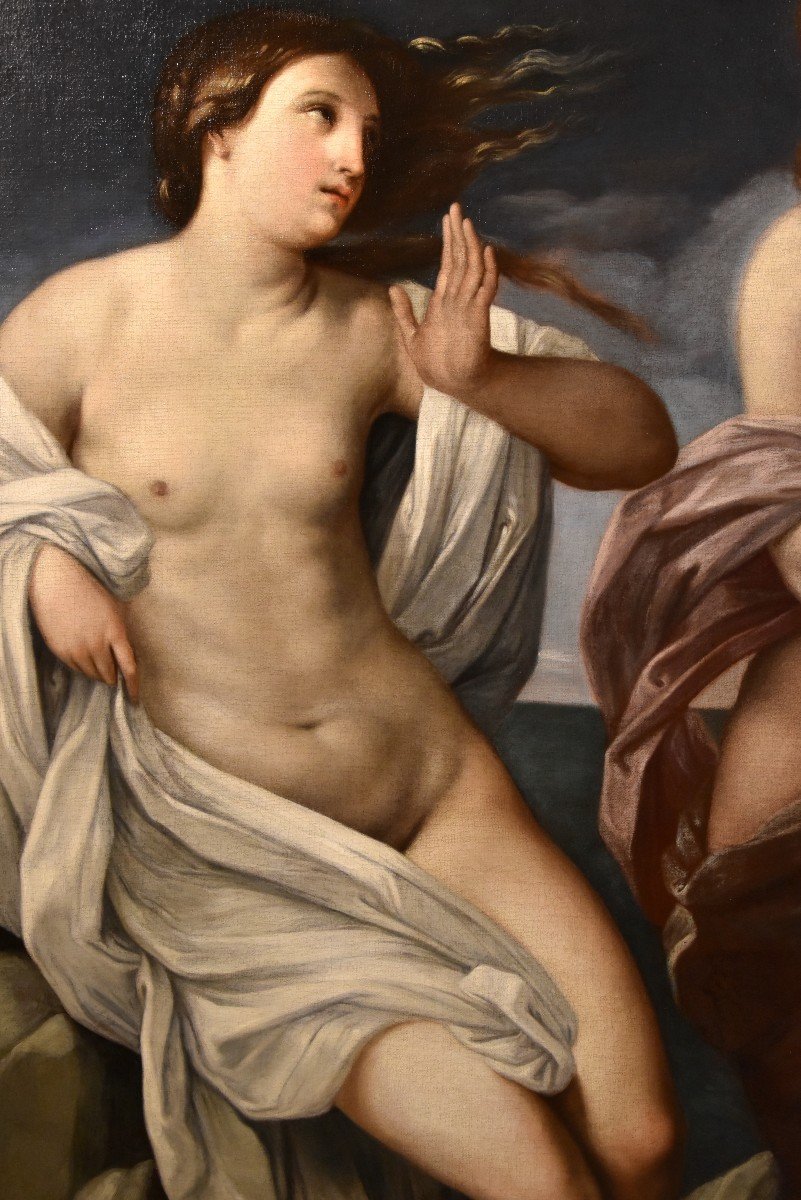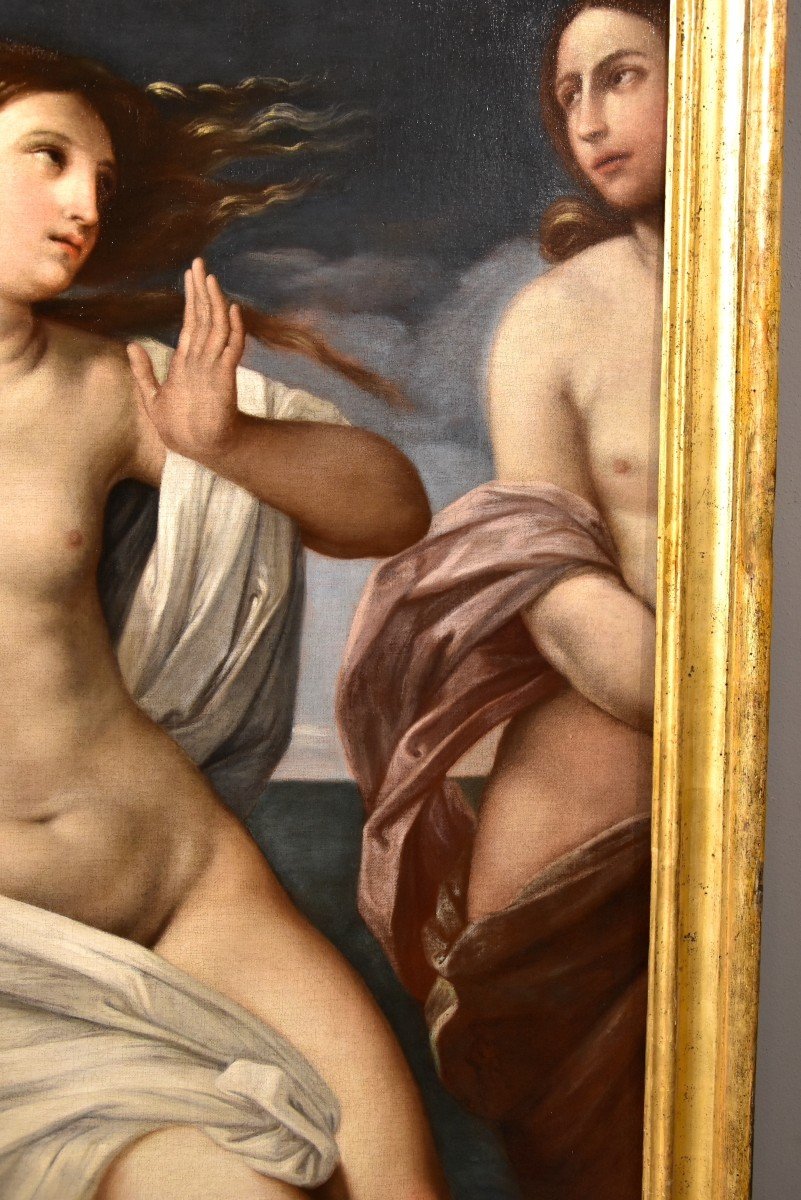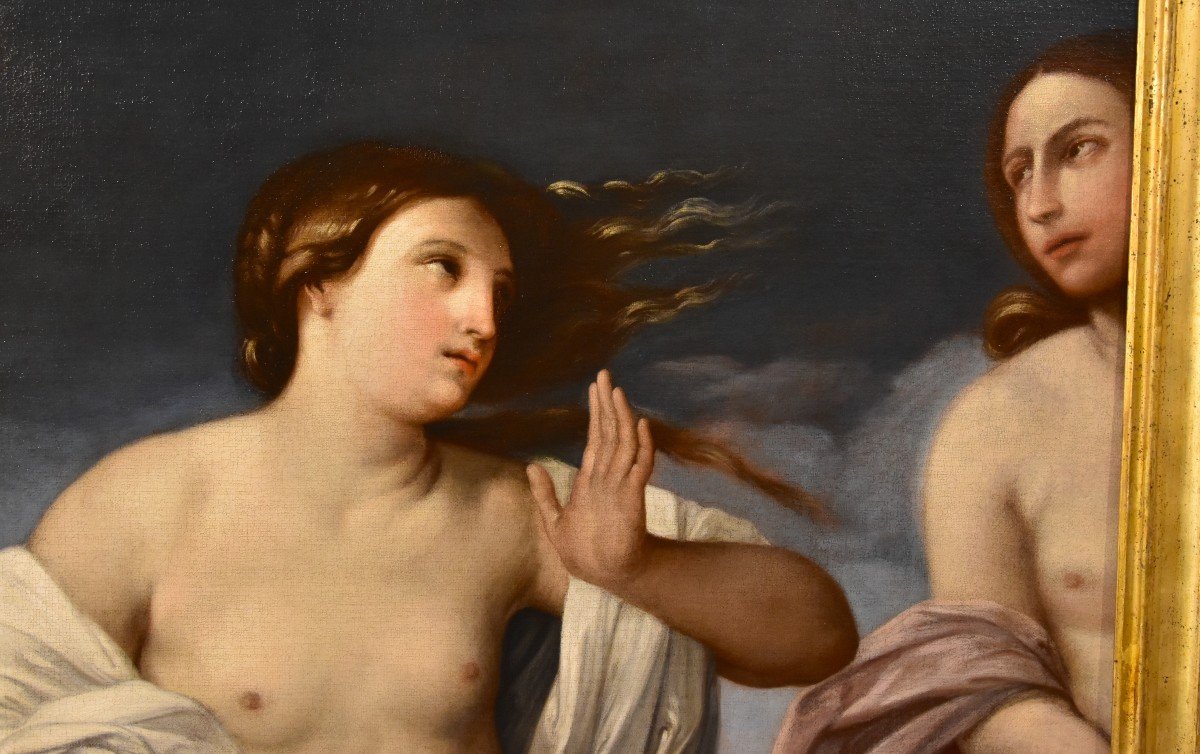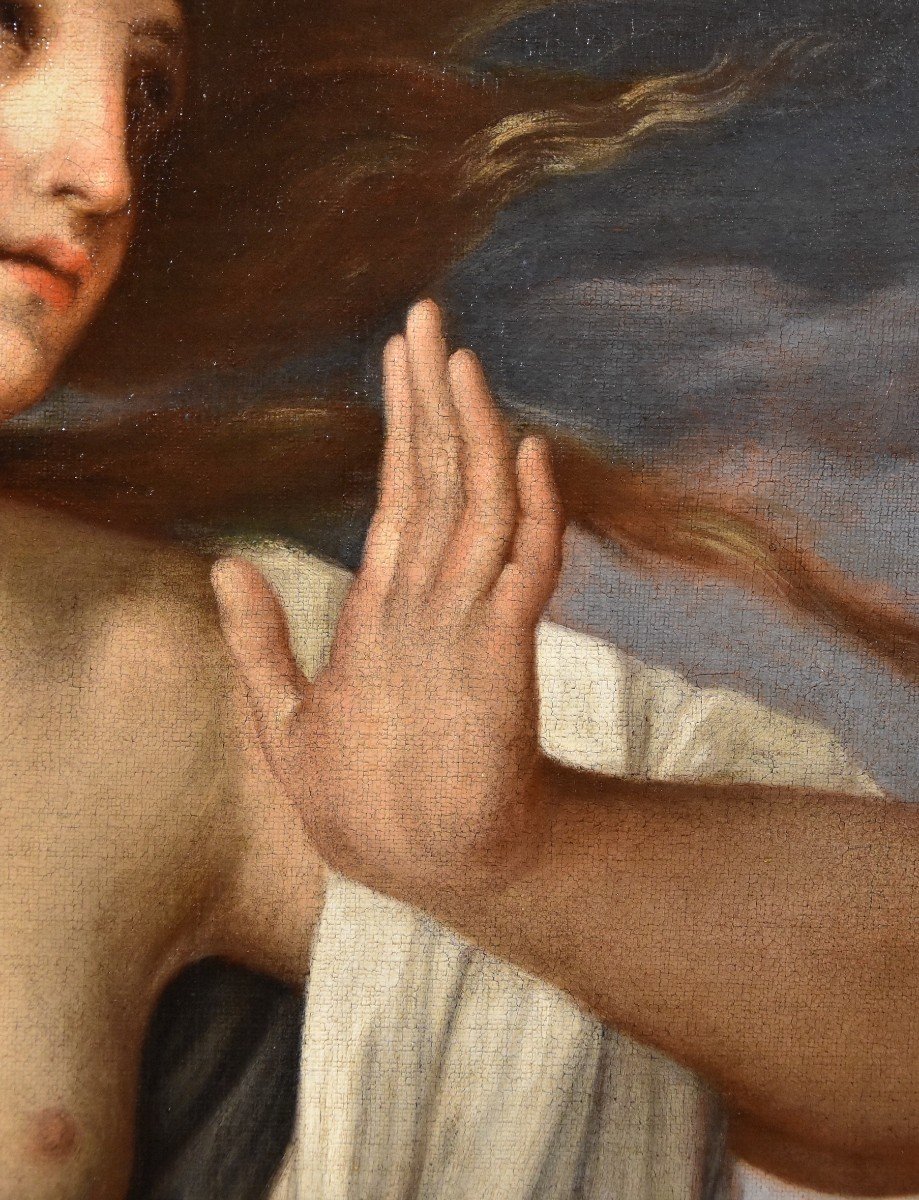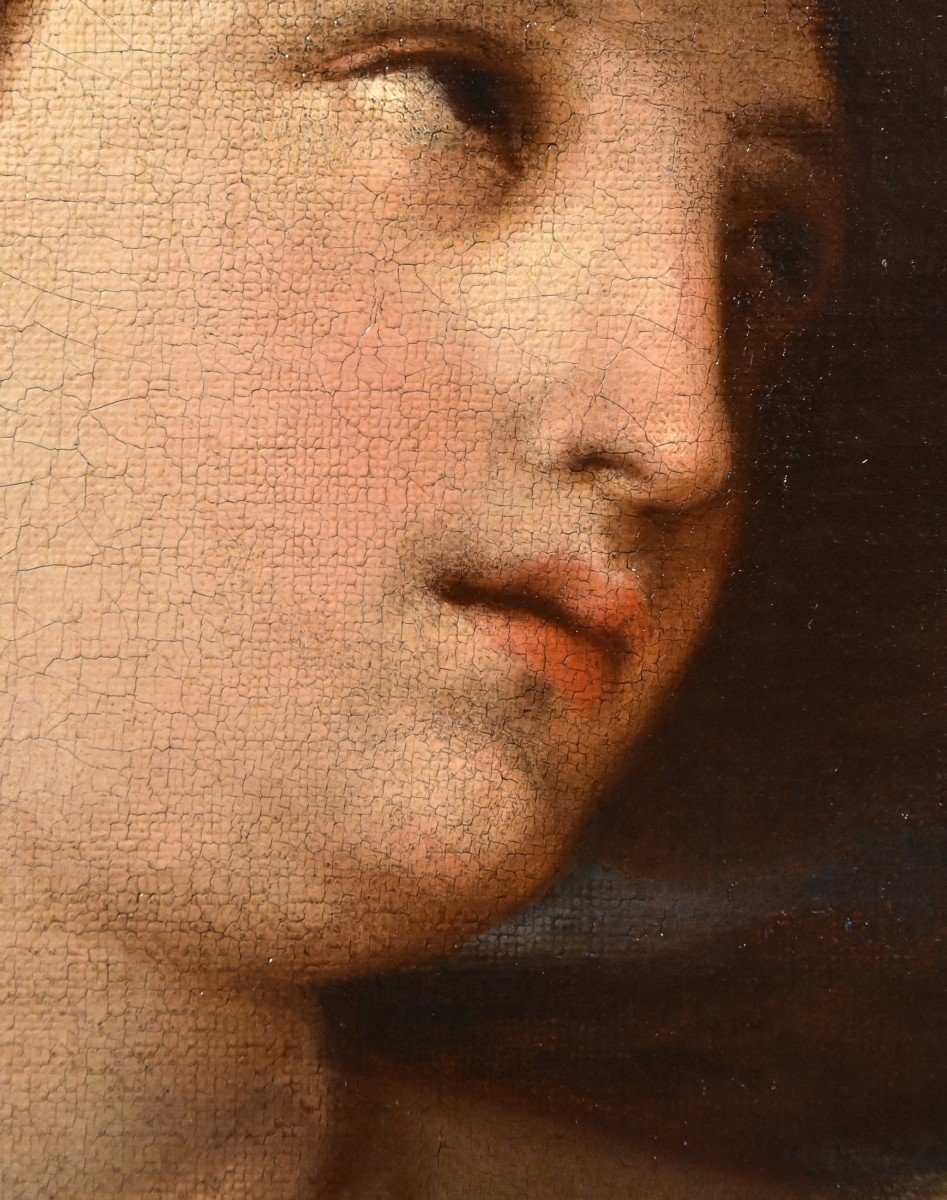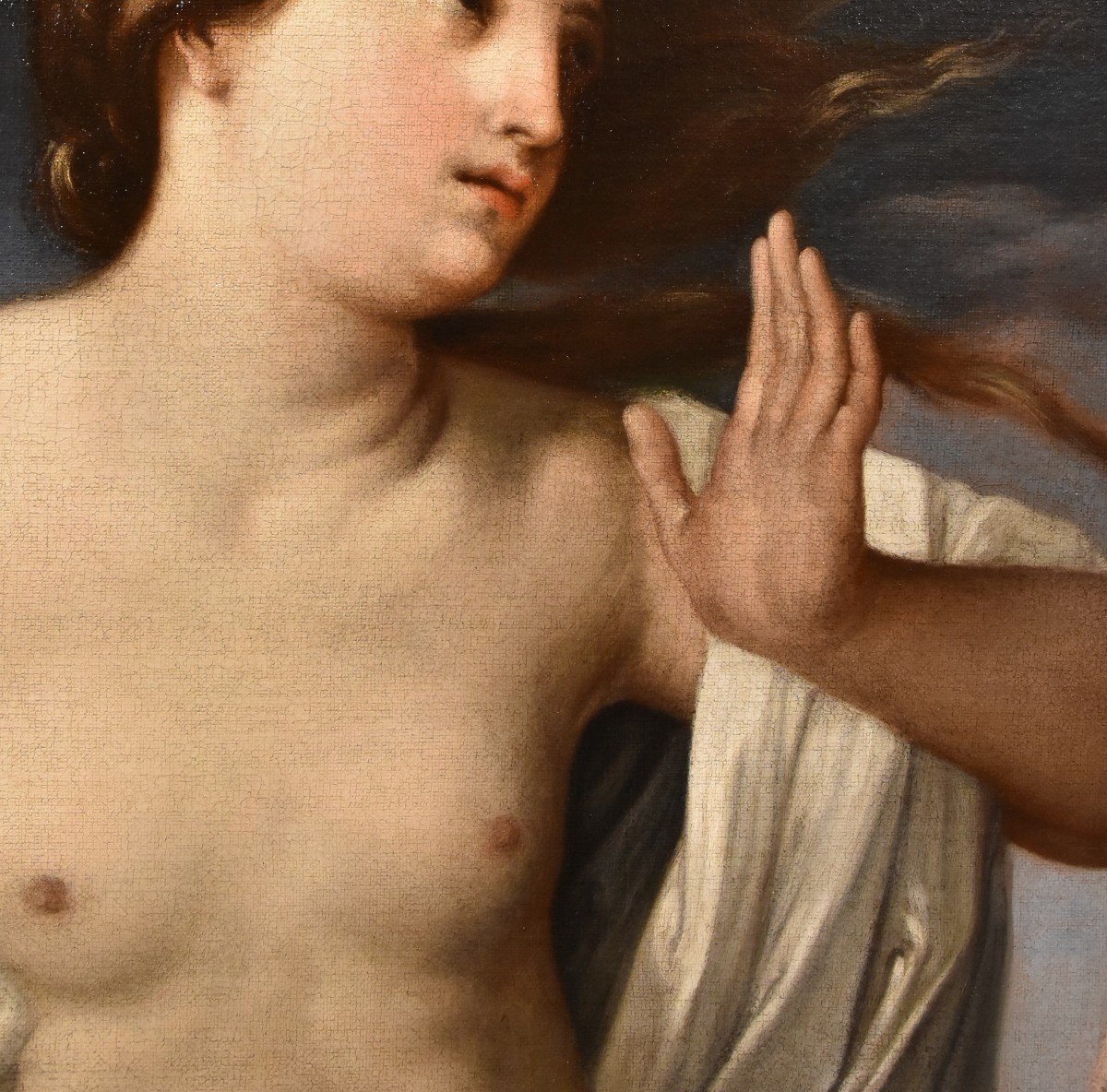"Princess Ariadne On The Island Of Naxos, Guido Reni (bologna, 1575 - 1642) Atelier De"
Workshop of Guido Reni (Bologna, 1575 - 1642)Attributed to Sebastiano Brunetti (Bologna 1610 c. - 1649)
The Princess of Crete Ariadne on the island of Naxos
With the expertise of Prof. Emilio Negro (Bologna)
Oil on canvas - cm. 139 x 100 - in an antique frame cm. 155 x 118
VIDEO:https://youtu.be/uNPpmUHHWfc
Details of the work: https://www.antichitacastelbarco.it/en/produit/la-principessa-arianna-sull-isola-di-nasso-guido-reni
The painting represents a complex mythological iconography depicting an attractive girl sitting on the rocks next to a nymph; both are mischievously naked, the first of the two young girls with long brown hair moved by the sea breeze and the sweetly distracted gaze, characteristic of someone who has just woken up.
The invention of this reassuring image derives from a segment of the painting complex by Guido Reni depicting Bacchus and Ariadne (Bologna, Pinacoteca Nazionale, deposited at the foundation of the Monte di Bologna and Ravenna, ink: https://it.m.wikipedia.org/wiki/File:Guido_reni,_arianna,_1638-40_ca.,_01.jpg), of which another version is known which some believe equally autographed (Rome, Galleria dell'Accademia di San Luca) and a printed reproduction engraved by Giovanni Battista Bolognini probably between 1637 and 1640.
The two female figures are therefore to be identified respectively with the beautiful Ariadne, princess of Crete and daughter of King Minos, in the company of her handmaid. After falling madly in love with Theseus, Ariadne helped him out of the labyrinth where she had faced and killed the monstrous Minotaur; despite this she was abandoned by the ungrateful Hellenic hero on the island of Naxos, who in our painting is evoked by the gray rocks and the sea on the horizon.
This enjoyable representation is therefore to be interpreted as a sort of synthetic allegory of that famous Greek myth - that of Bacchus and Ariadne - and of profane love; it is a very refined iconographic subject, inspired by the cultured literary models and pictorial examples of mythological subjects by great masters such as young Titian, Domenichino, Nicolas Poussin and above all the aforementioned Reni, whose invention it is inspired by.
Still noteworthy is the setting of the legendary episode: outdoors, against a background of natural beauty that highlights the half-naked sculptural bodies of the two girls.
From a stylistic point of view we are faced with a composition in which the sinuous features of the young protagonists refer to the best Italian figurative culture of the seventeenth century. In fact, a composite visual thought emerges, educated both in the light of the classicism of the Carraccis above all and no less on the sweet chiaroscuro of Guido Reni.
Compared to the Renian composition, however, some variants appear in our painting such as, for example, the different arrangement of Ariadne's hair of the clouds, the different colors of the sea, the sky and the handmaid's dress; moreover, the overall style of the work indicates a more mature execution time, to be placed towards the middle of the seventeenth century, a dating that allows us to find the stylistic characteristics of one of Reni's collaborating students, Sebastiano Brunetti (Bologna, active until 1649) , the artist who entered Reni's atelier at the beginning of the fourth decade of the seventeenth century, after the death of his first teacher, Lucio Massari, in 1633.
Almost immediately after his entry into the prestigious atelier of the great Bolognese Guido, Brunetti performed works in which he convincingly shows his classicist orientation: these are the two canvases of the hospital of S. Maria della Vita, the Announcing Angel and the Annunciation Madonna. , delivered in 1634.
As is evident from the comparison with our Ariadne on the island of Naxos with the works just mentioned, there are many stylistic points of contact: from the pictorial material used to the physiognomies, from the way of treating the drapery to certain details such as strokes of light. and, in general, the atmosphere of domestic accuracy, typical characteristics of the most significant works executed by Sebastiano Brunetti in the years of his artistic maturity.





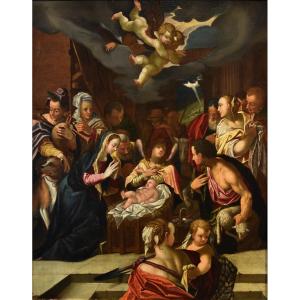
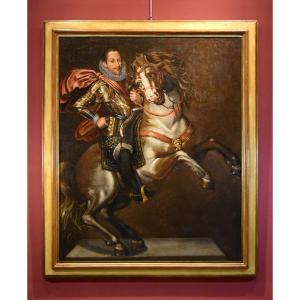



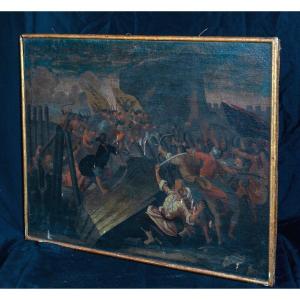

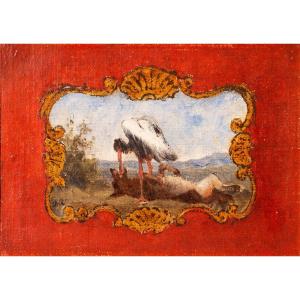


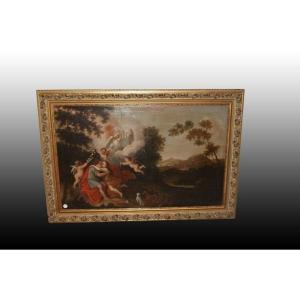




 Le Magazine
Le Magazine Rivista Artiquariato
Rivista Artiquariato TRÉSORS magazine
TRÉSORS magazine


